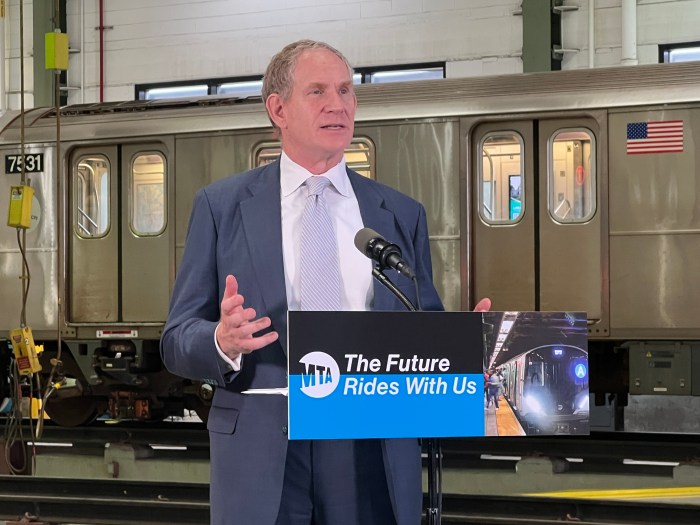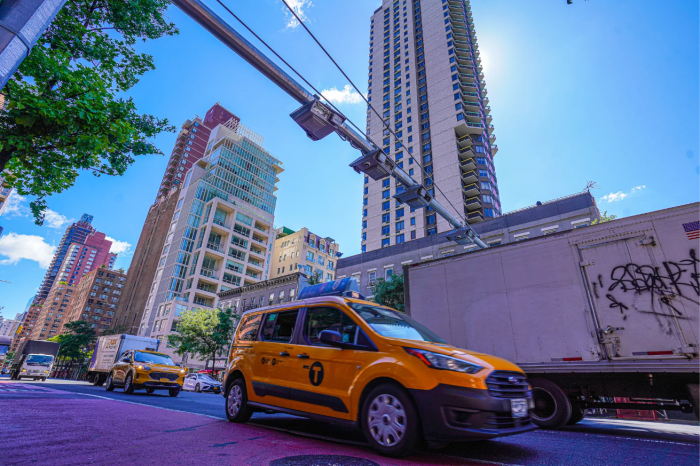
The MTA has decided to shut down L train service from Brooklyn through Manhattan for 18 months beginning in 2019 to perform what it describes as critical flood repairs to the line’s Canarsie Tunnel.
Commuters along what is one of the city’s busiest subway lines had been anticipating the decision, announced Monday, for months. The closure is promised to be the most disruptive in MTA history, with a direct impact on an estimated 225,000 riders that use the train to travel between the two boroughs each day.
Under the plan, L trains will run as usual between the line’s Brooklyn terminus in Canarsie and the Bedford Avenue station. But service will be suspended entirely between Bedford Avenue and Eighth Avenue in Manhattan. The closure is needed to accommodate the reconstruction of the train’s 92-year-old Canarsie Tunnel, which consists of two tubes that were heavily damaged during Superstorm Sandy.
“While the MTA always looks to avoid service disruptions, there is no question that repairs to the Canarsie Tunnel are critical and cannot be avoided or delayed. Throughout this process we have committed to engaging the community and listening to all concerns, so that we can address them as we prepare for this necessary work,” said MTA Chairman Tom Prendergast in a statement.
An 18-month closure was one of two plans that the agency had been considering since May. Ultimately, the MTA decided against the other option—a 36-month partial shutdown that would keep one tube open at a time, but reduce service by 80%, or limit accommodations to one out of five riders.
MTA top brass cited public preference and a “detailed operational review” in explaining the decision. The agency said it combed through emailed suggestions and comment cards that were collected at four public hearings and found that 77% of submissions favored the 18-month option.
In addition, New York City Transit President Veronique Hakim said that the agency, with access to the entire tunnel, will have more control of the project and will likely be able to incentivize the contractor to get the construction done ahead of schedule.
“What we do know is that [monetary incentives] can work effectively to motivate a contractor to put resources to shave time off the schedule,” Hakim said after a committee meeting on Monday.
The agency had packaged the shutdown options with a variety of mitigation proposals and will now work with the city and other stakeholders to solidify a plan.
Service could be boosted along the J, M and G lines; the MTA has proposed running full-length G trains to increase service along the line by 160%. Shuttle buses over the Williamsburg Bridge, Select Bus Service for crosstown Manhattan trips and East River ferries will also play vital roles in moving L train riders, the MTA said.
“We have time to put a thorough plan together and get it right,” Hakim said.
The MTA plans to award a contract for the work before the end of the year. The project has been ballparked at $900 million, with $500 million coming from federal Sandy relief funds. The 2012 hurricane flooded the Canarsie Tunnel with 7 million gallons of saltwater, damaging vital track and communications equipment; plus, concrete has fallen onto the track.
Transit advocates hope that the closure inspires a new focus on revitalizing bus transit. The Department of Transportation is currently exploring the idea of closing 14th Street to traffic to create a “busway” that would mimic the L train’s Manhattan path.
“There’s … an opportunity to really rethink how we’re using and dedicating our space for transit and for buses in particular,” said Veronica Vanterpool, an MTA board member and executive director of the Tri-State Transportation Campaign.
The mayor’s office said it’s ready to collaborate on mitigation efforts, though First Deputy Mayor Anthony Shorris slammed the agency for announcing its decision before finalizing commuting alternatives.
“While we recognize the need for the MTA to perform these important repairs and upgrades,” Shorris said in a statement, “we are deeply concerned that it would announce an 18-month shutdown of this critical service without a clear plan or a commitment of resources for mitigating the impact of this closure on hundreds of thousands of New Yorkers.”
When asked about Shorris’ comments, Hakim said the whole point of choosing a closure plan was so that agencies could begin working together on strategies.
“I think actually everybody shares the same concerns, which was coming up with a series of alternative plans that minimizes inconveniences for our customers,” Hakim said.
Officials and advocates agree that all possible travel alternatives should be explored.
“Every idea should be on the table; this is a desperate time and we should take desperate measures,” said Masha Burina, community organizer at the Riders Alliance, in a statement.
Whatever comes, residents and business owners along the route are bracing for the worst.
“It’s going to affect all small businesses, but particularly coffee shops,” said Rockaway resident Zoey Thorson, 34, regional manager of Gimme! Coffee in Williamsburg. “People who normally come here aren’t going to stop by anymore; they’ll instead go to coffee shops near the JMZ trains.”
Faye George, a 20-year-old nanny from Canarsie, said the shutdown could force her to find another job.
“That’s the only form of transport over here,” she said.
City Councilman Antonio Reynoso, whose district includes Williamsburg and Bushwick, has supported the idea of dedicating lanes for shuttle buses to help commute times. He has concerns about the businesses in his area, but he believes his constituents will manage.
“We’ll be fine—the community will be fine,” Reynoso said. “We’re New Yorkers first and New Yorkers know how to find their way around.”

































